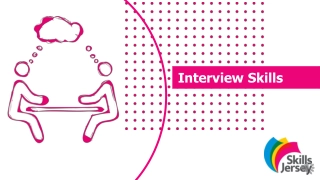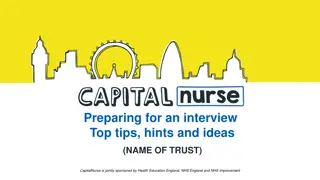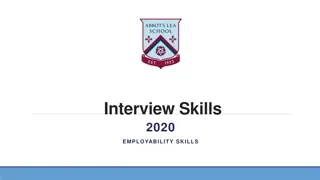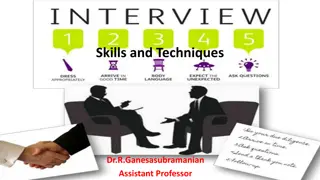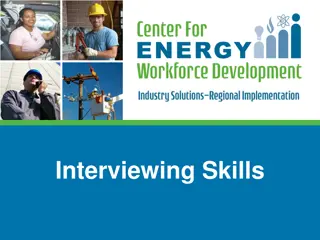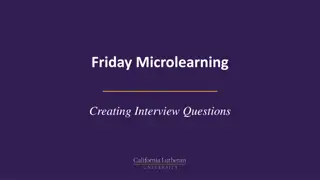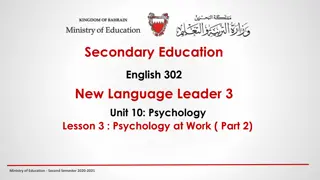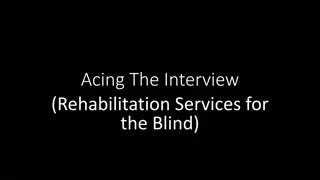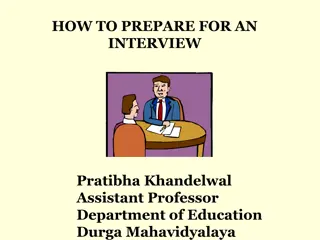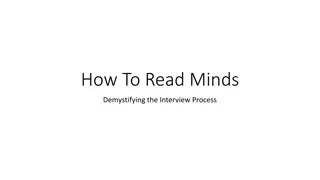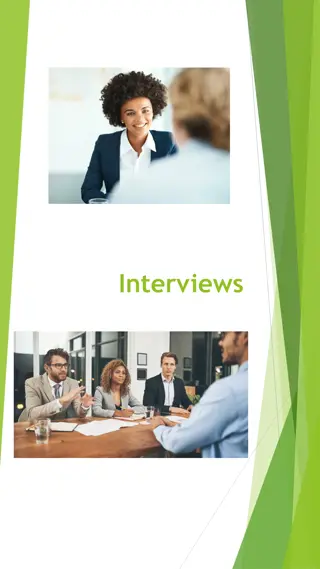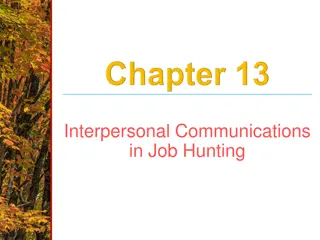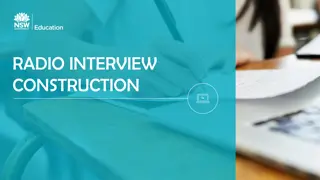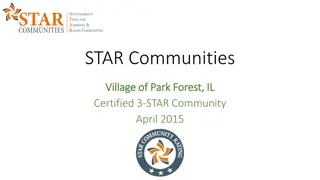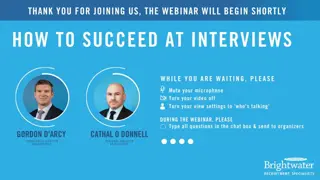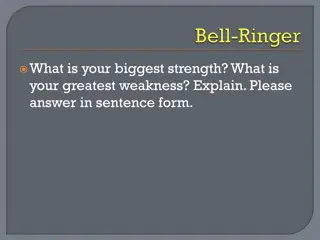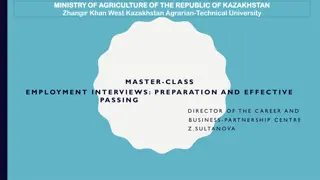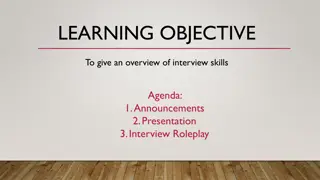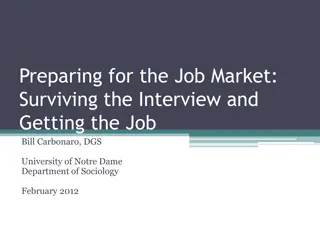Mastering the STAR Technique for Interview Success
The STAR Technique is a valuable tool for structuring answers during interviews. By breaking down responses into Situation, Task, Action, and Result, you can provide clear, focused examples to showcase your skills effectively. Utilize this method to prepare before interviews and deliver compelling answers on the spot, highlighting your problem-solving abilities and achievements.
Download Presentation

Please find below an Image/Link to download the presentation.
The content on the website is provided AS IS for your information and personal use only. It may not be sold, licensed, or shared on other websites without obtaining consent from the author. Download presentation by click this link. If you encounter any issues during the download, it is possible that the publisher has removed the file from their server.
E N D
Presentation Transcript
STAR Technique S T A R SITUATION TASK ACTION Result
What is the Star Technique? STAR Technique is a useful tool to help you break down answers when preparing for interviews. The idea is that you break down your answer to a question into sections which enable you to give an example, a reason, a summary of what happened and the result, whilst being able to stay focused on the point of the question. You can have a think about situations you can use as STAR answers before interviews, but this technique will also help you to think on the spot and give clear and focused answers to a question. On the next pages we explain more about each section of STAR.
Situation Setting the scene: General background to the response Where were you What was you position Example: I was working as a first-line engineer on an IT Service Desk for a utility company. This section is usually very small.
Task What was the specific challenge you faced/thing you had to do: A brief background: What was happening at the time and/or what triggered your need to respond Example: A colleague in our customer service department called and was frustrated as her IT support ticket had not been resolved. Like with the situation, the task section is usually quite brief.
Action What did you do to overcome the obstacle? The actions you completed The skills that you used to deal with the situation Example: (the words in bold show the skills used): Communication was essential to ensuring this issue was resolved quickly and effectively for the colleague to be able to continue doing their work. I used active listening skills to establish what the issue was, and then use closed questioning rather than open questions to get the relevant and specific information I needed to track progress; the ticket number and the email address. I clearly informed my colleague I would need around 3 minutes to find her ticket. When the ticket came up I saw that the ticket had been escalated to second-line engineers. I advised the customer of this and apologised she had not received an update. I knew I needed to set clear expectations on the time frame for this to be resolved, whilst acknowledging her need. I therefore advised I would call the second-line engineers for an update on the progress and would contact her within 1hr with an update as I could not guarantee their schedules. I managed my time effectively as this was an important problem that needed to be dealt with quickly, so I let my colleagues know I could not pick up other calls for around 30 minutes so they were aware that they needed to answer any incoming calls, demonstrating effective teamwork to manage a problem. I then spoke to the second line engineers, clearly communicating the contact information and ensuring they were aware of the time frame the colleague needed this done in. They gave me an estimated time of completion and their extension number in case the colleague needed to contact them again. Upon phoning the colleague back I paraphrased what the engineers had said so she understood their plan, and clearly gave her the time frame this was expected to be done by, along with their contact details if any problems arose.
Result What happened as a result of your actions: What went well? Did you learn anything? Example: The issue was resolved as the colleague was happy with the time frame I had given her for resolution, and was also pleased that she could contact the engineers dealing with her request directly as this would save her time if she needed to get back in touch. I feel active listening setting clear expectations really helped in this situation as the colleague felt listened too, but also understood the process that was involved. I actually got a workplace shout out from the colleague in question, who said she was thankful for my quick response as it helped her continue with her project work.
Lets see STAR in action: Here is a competency question, and an answer using STAR: Tell me about a time you have dealt with a customer complaint. Situation I was working in the position of receptionist at a office space letting company. Task Action Result It was important to understand what the customer was unhappy with. I used active listening to make sure I knew what the problem was. I also summarised the problem back to them to check my own understanding. I knew it was important for my communication to be clear to set expectations. I explained to the client that I understood their frustrations and apologised for the delay. At the moment my manager was unavailable however if they left me their contact details I would send an email to the manager with the request. I advised if they had not heard back in 3 working days then they could contact me directly. A customer was unhappy that they had not received a response from the manager regarding an estimate for an office they wanted to let. The customer became calm and thanked me for listening to them. They were happy that I was going to pass on the message and the clear time frames for the procedure meant that their expectations were managed for a response, meaning they would not feel frustrated if they did not get a response sooner. I passed the information to the manager with all contact details and time frames which enabled them to respond quickly. As a result we were able to keep our customer.
More Advice Breathe! Never answer questions straight away take 5-10 seconds to take a breath, focus on the question and select which example is going to be best. Be positive! Even if the situation maybe didn t work out the way you had hoped be positive about what you learned from the experience, how you would approach it differently next time, and how you have changed since. Not sure about the question? Don t be afraid to ask the interviewer to repeat the question, or ask them to phrase it slightly differently to help your understanding. Think you have set off on the wrong track with an answer? Stop, take a breath, and ask if you can start again. For more advice see our interview tips document available in the employability section of our website.
Have a go: Here is a competency question, try answering use the STAR Technique: Give me an example of how you ve demonstrated an understanding of customer needs? Task Situation Action Result
Have a go: Here is a competency question, try answering use the STAR Technique: Tell me about a situation where your communication skills made a difference Situation Task Action Result
Have a go: Here is a competency question, try answering use the STAR Technique: Describe a time you used creativity to solve a problem in the workplace. Task Situation Action Result
For more interview resources see our employability section on our website


